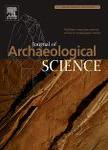版权所有:内蒙古大学图书馆 技术提供:维普资讯• 智图
内蒙古自治区呼和浩特市赛罕区大学西街235号 邮编: 010021

作者机构:Univ Southampton Ctr Maritime Archaeol Highfield Southampton SO17 1BF Great Britain England
出 版 物:《JOURNAL OF ARCHAEOLOGICAL SCIENCE》 (考古学杂志)
年 卷 期:2018年第100卷
页 面:120-129页
核心收录:
学科分类:0303[法学-社会学] 0601[历史学-考古学] 06[历史学] 07[理学] 0708[理学-地球物理学] 0712[理学-科学技术史(分学科,可授理学、工学、农学、医学学位)]
基 金:Julia and Hans Rausing Trust Education and Exploration Foundation (EEF)
主 题:4D modelling Black sea Maritime archaeology Underwater photogrammetry Bronze age Low visibility
摘 要:This paper introduces the applicability of underwater photogrammetric survey within challenging conditions as the main tool to enhance and enrich the process of documenting archaeological excavation through the creation of 4D models. Photogrammetry was being attempted on underwater archaeological sites at least as early as the 1970s and today the production of traditional 3D models is becoming a common practice within the discipline. Photogrammetry underwater is more often implemented to record exposed underwater archaeological remains and less so as a dynamic interpretative tool. Therefore, it tends to be applied in bright environments and when underwater visibility is 1 m, reducing its implementation on most submerged archaeological sites in more turbid conditions. Recent years have seen significant development of better digital photographic sensors and the improvement of optical technology, ideal for darker environments. Such developments, in tandem with powerful processing computing systems, have allowed underwater photogrammetry to be used by this research as a standard recording and interpretative tool. Using multi-source photogrammetry (5, GoPro5 Hero Black cameras) this paper presents the accumulation of daily (4D) underwater surveys carried out in the Early Bronze Age (3300 BCE) to Late Ottoman (17th Century AD) archaeological site of Ropotamo in the Bulgarian Black Sea under challenging conditions ( 0.5 m visibility). It proves that underwater photogrammetry can and should be used as one of the main recording methods even in low light and poor underwater conditions as a way to better understand the complexity of the underwater archaeological record.